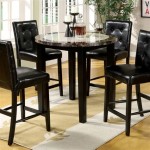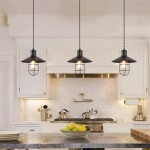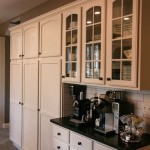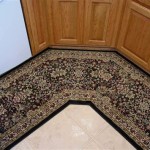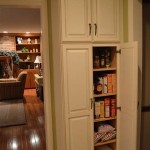Ceiling Lighting Solutions for Compact Kitchens
Efficient and effective lighting is crucial in any kitchen, regardless of its size. However, in a small kitchen, the right lighting can make a significant difference, enhancing functionality, visual appeal, and perceived space. Ceiling lights are a primary source of illumination in kitchens, and selecting the appropriate style is paramount for optimizing the room's potential. This article will explore various ceiling lighting options suitable for small kitchens, considering factors such as brightness, energy efficiency, style, and spatial impact.
Understanding the Lighting Needs of a Small Kitchen
Before selecting a ceiling light, it is essential to assess the specific lighting needs of the kitchen. A small kitchen may have limited natural light, necessitating a reliance on artificial illumination. The primary lighting goals should include providing adequate ambient light for general visibility, task lighting for specific work areas like countertops and the sink, and accent lighting to highlight architectural features or decor. A successful lighting plan considers the kitchen's layout, color scheme, and existing fixtures.
Ambient lighting, also known as general lighting, provides overall illumination to the entire kitchen. It is the foundation upon which other lighting layers are built. In a small kitchen, a single, well-placed ambient light fixture can often suffice, although in larger or irregularly shaped small kitchens, multiple fixtures may be necessary to ensure even light distribution. The chosen fixture should provide sufficient lumens to adequately illuminate the entire space, taking into account the room's dimensions and surface reflectance.
Task lighting is designed to illuminate specific work areas, such as countertops, sinks, and cooking surfaces. Inadequate task lighting can lead to eye strain and potential safety hazards during food preparation. Under-cabinet lighting is a common and effective solution for providing task lighting in kitchens. However, ceiling-mounted fixtures can also be used effectively for this purpose, particularly if strategically positioned to direct light onto the work surfaces. Recessed lighting or track lighting can be adjusted to focus light where it is most needed.
Accent lighting is used to highlight specific features or create visual interest in the kitchen. This type of lighting is less about functionality and more about aesthetics. It can be used to showcase artwork, architectural details, or decorative objects. In a small kitchen, accent lighting can be used to add depth and dimension, making the space feel larger and more inviting. Small spotlights or pendant lights can be used for this purpose, drawing attention to specific areas of the kitchen.
Types of Ceiling Lights Suitable for Small Kitchens
Several types of ceiling lights are well-suited for small kitchens, each offering distinct advantages in terms of style, functionality, and space optimization. These options include flush mount lights, semi-flush mount lights, recessed lights, track lighting, and pendant lights. The choice of fixture will depend on the kitchen's specific needs, aesthetic preferences, and budget.
Flush mount lights are installed directly against the ceiling, making them an ideal option for kitchens with low ceilings. They provide a streamlined and unobtrusive look, maximizing headroom and minimizing visual clutter. Flush mount lights are available in a wide range of styles, from simple and functional to more decorative designs. They can provide sufficient ambient lighting for small kitchens, and they are relatively easy to install and maintain. Look for fixtures with frosted glass or diffusers to soften the light and prevent glare.
Semi-flush mount lights are similar to flush mount lights, but they extend slightly further from the ceiling. This allows for more decorative designs and can provide slightly more ambient light. Semi-flush mount lights are a good option for kitchens with slightly higher ceilings, but they may not be suitable for extremely low ceilings. They offer a balance between functionality and aesthetics, and they can be used to add a touch of style to the kitchen without overwhelming the space.
Recessed lights are installed directly into the ceiling, creating a clean and minimalist look. They are an excellent option for small kitchens because they take up no visual space and provide focused light where it is needed. Recessed lights can be used for both ambient and task lighting. They can be strategically positioned to illuminate countertops, sinks, and other work areas. Recessed lighting requires more extensive installation than other types of ceiling lights, but the resulting clean and modern aesthetic can be well worth the effort.
Track lighting consists of multiple light heads mounted on a track that is attached to the ceiling. This type of lighting is highly versatile because the light heads can be adjusted to direct light where it is needed. Track lighting is a good option for small kitchens that require both ambient and task lighting. The track can be configured to follow the layout of the kitchen, and the light heads can be positioned to illuminate specific work areas. Track lighting is available in a wide range of styles, from modern and minimalist to more traditional designs.
Pendant lights are suspended from the ceiling by a chain, rod, or cord. They can be used to provide both ambient and task lighting, depending on their size and positioning. In a small kitchen, pendant lights are most often used as accent lighting or to provide task lighting over an island or peninsula. When selecting pendant lights for a small kitchen, it is important to choose fixtures that are appropriately sized for the space. Overly large pendant lights can overwhelm a small kitchen, while too-small pendant lights may not provide sufficient light. It is also important to consider the height of the ceiling and the length of the pendant's suspension. The bottom of the pendant should be positioned at a comfortable height for the users of the kitchen.
Key Considerations When Choosing Ceiling Lights for a Small Kitchen
Several key factors should be considered when selecting ceiling lights for a small kitchen to ensure optimal functionality, aesthetics, and energy efficiency. These considerations include the size and shape of the kitchen, the ceiling height, the desired level of brightness, the energy efficiency of the light source, and the overall style of the kitchen.
The size and shape of the kitchen will influence the number and placement of ceiling lights. A larger small kitchen may require multiple light fixtures to provide adequate illumination, while a smaller small kitchen may only need a single fixture. The shape of the kitchen will also affect the placement of the lights. Long, narrow kitchens may benefit from a series of recessed lights or track lighting to provide even illumination. Irregularly shaped kitchens may require a more customized lighting plan.
The ceiling height is a critical factor in selecting ceiling lights. In kitchens with low ceilings, flush mount lights or recessed lights are the best options because they maximize headroom. Semi-flush mount lights may be an option for kitchens with slightly higher ceilings, but it is important to ensure that the fixtures do not hang too low and obstruct the view or create a feeling of claustrophobia. Pendant lights are generally not recommended for kitchens with low ceilings because they can make the space feel even smaller.
The desired level of brightness is another important consideration. The amount of light needed in a kitchen will depend on the size of the room, the color scheme, and the tasks that will be performed in the space. It is generally recommended to use brighter lights in work areas, such as countertops and sinks, and dimmer lights in areas that are primarily used for dining or relaxation. The brightness of a light fixture is measured in lumens. When selecting ceiling lights, it is important to choose fixtures that provide sufficient lumens for the intended purpose.
The energy efficiency of the light source is an increasingly important consideration. LED lights are significantly more energy-efficient than traditional incandescent or halogen lights. They also last much longer, which can save money on replacement costs. LED lights are available in a wide range of colors and brightness levels, making them a versatile option for any kitchen. When selecting LED lights, it is important to look for fixtures with a high CRI (color rendering index). A high CRI indicates that the light will accurately render the colors of objects in the kitchen.
The overall style of the kitchen should also be considered when selecting ceiling lights. The light fixtures should complement the other design elements in the kitchen, such as the cabinets, countertops, and backsplash. If the kitchen has a modern and minimalist style, recessed lights or track lighting may be the best option. If the kitchen has a more traditional style, flush mount lights or semi-flush mount lights with decorative details may be more appropriate. Pendant lights can be used to add a touch of personality and style to any kitchen, regardless of its overall design.

Best Low Ceiling Small Kitchen Lighting Lights Remodel

6 New Small Kitchen Lighting Ideas 1stoplighting

Kitchen Ceiling Lighting Ideas For Your Home Designcafe

6 New Small Kitchen Lighting Ideas 1stoplighting
:max_bytes(150000):strip_icc()/ScreenShot2022-03-26at12.36.02PM-812b3d727ac94c3fafe4b2d4a0df32fe.png?strip=all)
13 Lighting Ideas For Small Kitchens

Small Kitchen Lighting Ideas That Make It Seem Bigger Flip The Switch

Kitchen Ceiling Lighting Ideas For Your Home Designcafe

Small Kitchen Lighting Ideas Advice Lamps Plus

Best Low Ceiling Small Kitchen Lighting

These 8 Small Kitchen Lighting Ideas Are Big On Style Hunker

